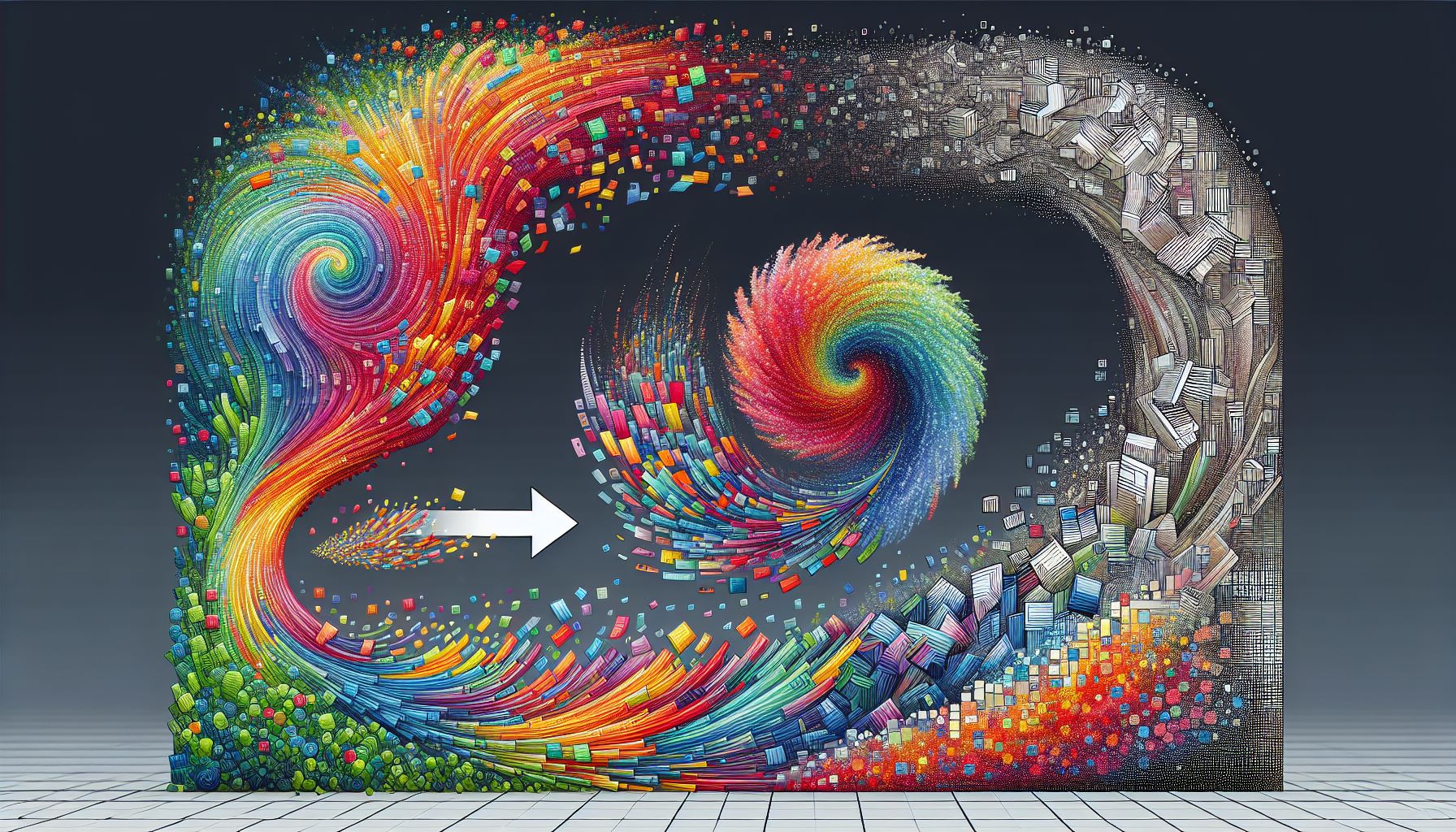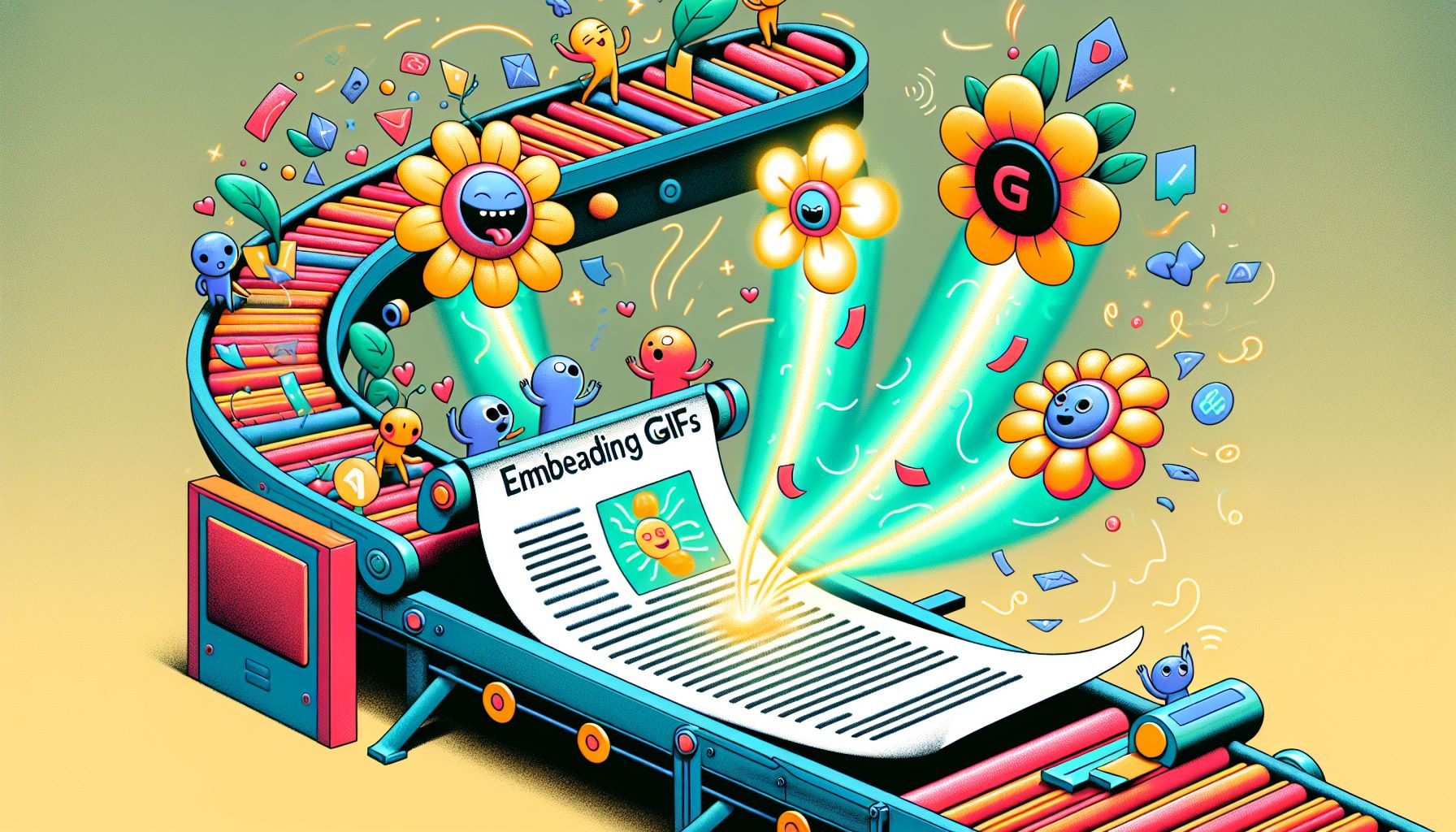GIF To PDF
The GIF to PDF tool converts GIF images, known for their animated and compressed format, into versatile and easy-to-share PDF files. This tool is ideal for users who need to compile multiple GIF images into a single document for presentations or archival purposes. The conversion process maintains the original quality and animation of the GIFs, making it perfect for professional documents that require dynamic and engaging visuals.
Share on Social Media:
Transform Your Images: Best Ways to Convert GIF to PDF Effortlessly
If you need to convert a GIF to PDF, you’re in the ideal spot. This article strips away the complexity, offering you a direct path to turning your animated or static GIFs into PDFs with clarity and ease. From online converters to desktop applications, we’ll cover all you need to know to make the switch effectively.
Key Takeaways
GIFs are loved for their simplicity, enabling easy sharing and animation on the web, but they’re limited to a 256 color palette.
Converting GIFs to PDFs can be done effortlessly with tools like Adobe Acrobat and online services like PagesTools.com, which maintain the image quality during the conversion.
While GIFs typically become static images when embedded in PDFs, some tools and tricks allow for animated GIFs to be included in PDF documents, keeping them lively.
Understanding GIF Files

Delving into the world of GIFs, we find a format that’s been around since parachute pants and big hair were in vogue. Developed by Steve Wilhite in 1987, the humble Graphics Interchange Format (GIF) has danced its way through the digital era, gaining a spot in our memes and hearts with its Lempel-Ziv-Welch (LZW) lossless compression. Yet, while your favorite GIFs in gif format paint the internet with only 256 colors, their simplicity is precisely what makes them so accessible and easy to share.
Remember the first time you saw a website banner with moving images? That was the magic of the GIF89a specification, introducing animations that have since become a language of their own.
Graphics Interchange Format
It’s June 1987; the GIF makes its debut, destined to become a cornerstone of internet culture. As it evolved with the 1989 update, it gained new powers: transparency and more animations, effectively giving birth to the digital sticker and the mini-cartoon in one fell swoop.
This nifty format, known as a gif file, supports up to 8 bits per pixel and was designed for the very purpose of exchanging gif images over our beloved networks. And who could forget the joy of discovering that a GIF could house not just one image file, but multiple image files for those basic yet captivating animations? Unlike vector graphics, GIFs are pixel-based, making them suitable for simple animations.
Benefits of Using GIFs
But why GIFs? For starters, they’re zippy on the load and gentle on the data, thanks to their lossless compression, which keeps the image quality intact no matter how many times you squish and squash it. Despite their limited color palette, GIFs have become ubiquitous, compatible with nearly every device and browser under the sun.
And let’s not gloss over their secret weapon: transparent backgrounds, making them the Swiss Army knife of web design, blending seamlessly into any digital canvas.
Converting GIF to PDF: Top Methods

Now, imagine wanting to convert gif images into the more universal PDF format. It’s not just about switching containers; it’s about preserving the soul of your GIF in a new body. High-quality results are paramount when it’s time to make that leap from GIF to PDF, and thankfully, there are top-notch methods out there that promise to keep your images looking crisp.
Utilizing Adobe Acrobat
Adobe Acrobat steps up as a reliable ally in this transformation. With its online service, conversion is just a few clicks away, accessible from any web browser. Don’t let the name fool you; Acrobat’s JPG to PDF converter is a jack of all trades, accepting a bevy of formats including BMP, PNG, and of course, our beloved GIFs.
Simply upload your files, arrange them to your liking, and let Acrobat work its magic to turn them into a polished PDF document, ready for you to edit PDF content as needed.
Employing PagesTools.com
Seeking an alternative? PagesTools.com is a gem of a resource, offering a free GIF to PDF converter that’s as easy as pie. Its user-friendly interface means you can drag and drop your GIFs, choose your output format, and in a snap, you’ve got a PDF ready to go. This pdf tool is perfect for your conversion needs.
And for those times you need to combine multiple images, PagesTools stands ready to merge them into a single, neat PDF file, customizable to your heart’s content.
Leveraging Online Conversion Services
For the security-conscious, online conversion services like PagesTools.com provide that much-needed peace of mind, safeguarding your uploads with secure SSL connections. PagesTools.com caters to a variety of browsers and operating systems, offering a straightforward conversion process. And with PagesTools.com’s ability to juggle over 200 formats, you’re never left wanting.
Rest easy knowing that services like PagesTools.com respect your privacy, promptly deleting all traces of your files post-conversion.
Embedding GIFs in PDF Documents

Adding a GIF to a PDF might sound like a magic trick, but it’s entirely within your grasp. The process can swing from simple to complex, depending on the tools at your disposal. Keep in mind, though, if you’re using Adobe Acrobat, don’t expect your GIF to break into a dance; it’ll stay put as a static image.
Adobe InDesign Integration
Adobe InDesign users, take note: your software might give the cold shoulder to animated GIFs, but there’s a workaround. Convert your GIF to a QuickTime MOV file, and you’re golden. Then, let InDesign’s ‘Embed in PDF’ feature do the rest, inserting your now-compatible animation into the document.
And if you’re aiming for that extra professional sheen, consider swapping those GIFs for MP4 videos to create that animated effect in your PDFs.
PDFelement Tool
Another ace up your sleeve is the PDFelement tool, a software solution that keeps your GIF’s spirit alive, animation and all. By utilizing special features like LaTeX and the animate package, PDFelement allows you to insert GIFs into your PDFs without losing their zest for movement.
Overcoming Limitations of GIFs in PDFs

The journey from GIF to PDF isn’t without its hurdles. While GIFs in PDFs tend to settle down into static images, there are ways to vault over this obstacle and preserve the dynamic nature of your favorite animations.
Innovations in software and alternative methods offer a beacon of hope for keeping your pdf files lively and accessible through pdf online solutions.
Static Images vs. Animated GIFs
It’s a truth universally acknowledged that a GIF in pursuit of PDF-ness must be prepared to stand still. When converted by standard means, the result is a stationary image, a far cry from the original animation.
However, with tools such as Adobe Acrobat, you can insert a GIF as a static image, or even better, use a professional PDF editor to add an external link to the GIF, allowing it to play within the document.
Ensuring Quality Preservation
As you embark on this conversion quest to convert gif, it’s critical to keep your eye on the prize: quality preservation. Avoid the siren call of lossy compression, which can degrade your GIF’s quality, especially if you’re tempted to convert it to JPEG first. Instead, dial in the right preferences—quality, resolution, color type—to ensure your image emerges on the other side of conversion looking as sharp as ever.
Remember, the software you wield, like the venerable Adobe Acrobat, plays a pivotal role in this delicate dance of data retention and file size management.
Enhancing PDFs with GIFs: Practical Applications

Picture this: your marketing materials, not just flat and informative, but alive with the subtle motion of GIFs. These sprightly images can elevate your branding, keeping eyes glued to the page and making your message resonate. In the blink-or-you’ll-miss-it world of digital spaces, GIFs are the hook that catch and hold attention, offering a reprieve from the sea of static text.
And when it comes to education, GIFs can turn complex topics into simple, engaging stories, making learning not just effective but downright enjoyable.
Summary
We’ve ventured far and wide across the terrain of GIFs and PDFs, uncovering the secrets to converting, embedding, and enhancing with ease. From the rich history of GIFs to the modern marvels of conversion tools and the crafty tactics to keep animations alive in PDFs, we’ve covered it all. Remember, whether it’s for work, study, or play, the art of transforming GIFs into PDFs is more than just a technical process—it’s a way to bring creativity into every document you create.
Frequently Asked Questions
Can I convert a GIF to a PDF without losing the animation?
Unfortunately, standard methods will result in a static image when converting a GIF to PDF, but you can preserve the animation using tools like PagesTools.com and the animate package. Give it a try!
Are there any free tools available for converting GIFs to PDFs?
Yes, you can use PagesTools.com for a free and user-friendly GIF to PDF converter.
Will converting a GIF to PDF reduce its quality?
Converting a GIF to PDF using Adobe Acrobat and proper settings will not significantly reduce its quality.
Can I add multiple GIFs to a single PDF?
Yes, you can merge multiple GIFs into a single PDF using tools like PagesTools.com.
Is it safe to use online conversion services for my files?
Yes, it is safe to use online conversion services like PagesTools.com as they use secure SSL connections and delete your files after conversion to protect your privacy.